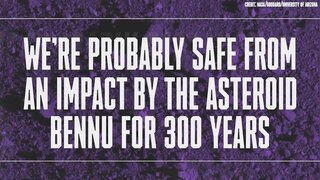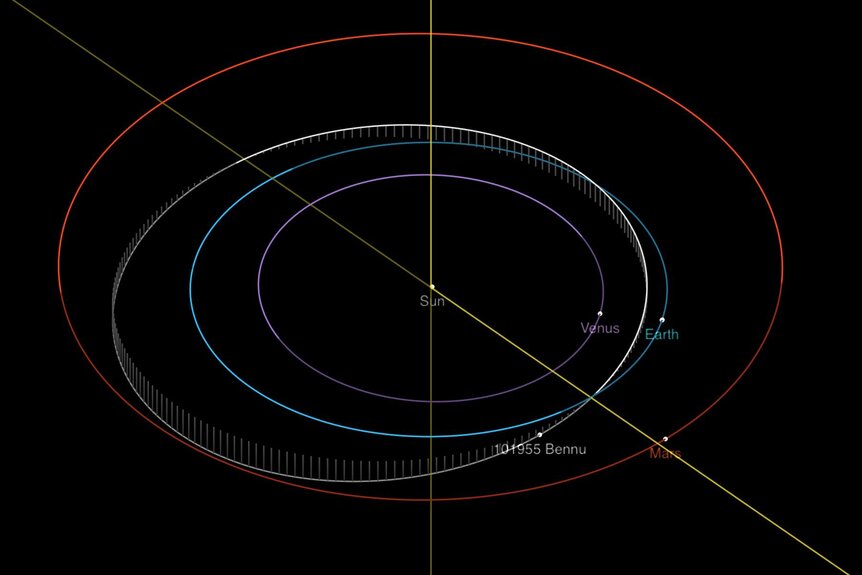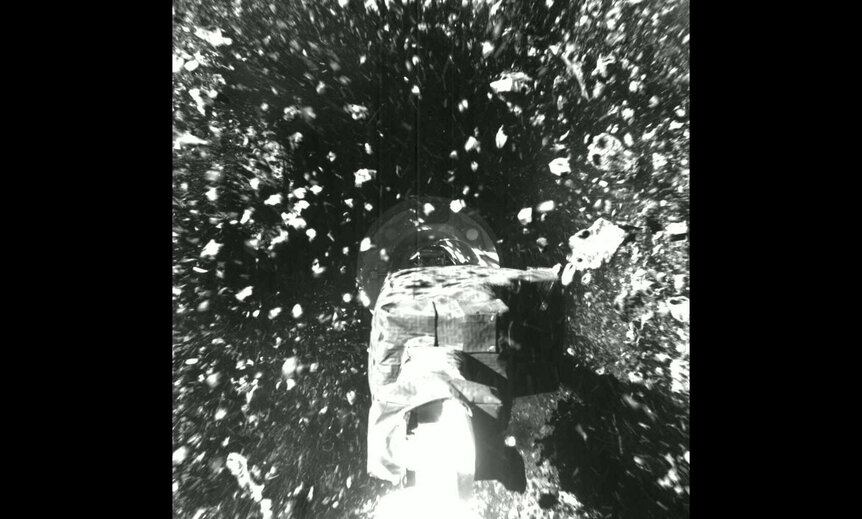Create a free profile to get unlimited access to exclusive videos, sweepstakes, and more!
The Asteroid Bennu Is a Time Capsule from the Early Solar System
Astronomers take "know thine enemy" to heart.
In 2012, director Lorene Scafaria imagined a bittersweet apocalypse in Seeking a Friend for the End of the World. The story follows Dodge (Steve Carell) and Penny (Keira Knightley), two people living through the last few weeks of the human race, as a planet-killing asteroid races toward Earth. It’s the sort of thing we think about a fair amount, both in our stories and in the lab. While Hollywood has been busily pumping out movies about humanity fighting giant space rocks, real world scientists have been hunting them down, studying them, and coming up with plans to prevent fiction from becoming reality.
The good news is that we’ve found most of the big baddies floating around our cosmic neighborhood and most of them aren’t planning to swing by for a visit anytime soon. But that doesn’t mean we’re totally out of the woods. The asteroid Bennu is potentially hazardous, with roughly 1 in 1,750 odds of smacking into us sometime in the next 300 years.
The other good news is, if it does hit us, it’ll only leave a crater about 4 miles wide and devastate nearby cities. It won’t be the end of the human story, and if we keep developing technologies like those used in NASA’s successful Double Asteroid Redirection Test (DART) mission, we might be able to comfortably nudge Bennu out of the way. In the meantime, scientists are studying Bennu like no other potentially hazardous asteroid before it.
For More on Bennu:
Electrostatic Repulsion May be Lofting Small Rocks Off the Asteroid Bennu
NASA Snatched a Sample of an Asteroid, Now They’re Returning it to Earth
NASA Reveals First Details of OSIRIS-REx Asteroid Sample
The Potentially Hazardous Asteroid 101955 Bennu
The asteroid 101955 Bennu (just Bennu for short) is a relatively small Apollo asteroid hanging out in near-Earth space. It’s only about a third of a mile across at its widest point and it’s been cruising around the solar system for about 4.5 billion years. In fact, astronomers believe that Bennu came together in more or less its current chemical composition during the first 10 million years of the solar system’s history.
In the beginning, as it were, Bennu was probably part of a much larger rock with a diameter between 60 and 130 miles across. A violent collision sometime between 700 million and 2 billion years ago smashed that rock apart, scattering shards through space. Some of those shards glommed together into Bennu. Rather than a totally solid mass, Bennu is a collection of rocks, dust, and boulders loosely held together by gravity. Scientists suspect that if you were to step on its surface, you might slide right through, like falling into a ball pit of gravel.
It’s believed that Bennu originally formed in the asteroid belt between Mars and Jupiter, only later migrating closer to the Sun. Today, it orbits at a distance of 105 million miles from the Sun, only 12 million miles more distant than the Earth. It orbits the Sun every 1.2 years and the orbits of Bennu and Earth are such that they come into close proximity roughly every six years.
Asteroid Bennu Time Capsules Reveal Early Solar System
Because of its age, Bennu is a time capsule from the formation of the solar system, providing a window into the conditions that led to life arising on Earth. From early observations, astronomers suspected that Bennu might contain organic molecules of the kind that might have kickstarted life on our planet. Which is why NASA spun up a mission to visit Bennu, collect a sample of the asteroid, and bring it home.
NASA’s OSIRIS-REx (now in an extended mission and renamed OSIRIS-APEX) mission flew to Bennu and studied it from a short distance for years. When the time was right, the spacecraft descended to the surface and picked up a sample in a cosmic smash and grab, then it brought the loot home. Analysis of the sample has repealed phosphates, tiny white crystals left behind when water rapidly evaporated from the surface. It suggests that Bennu has undergone several liquid water events throughout its history and might help explain how the ingredients for life arrived on Earth billions of years ago.
It’s asteroids at the beginning and asteroids at the end. Catch Seeking a Friend for the End of the World, from Universal Pictures.
































